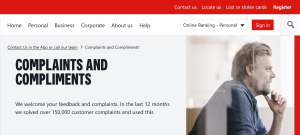I hope you find my writing and business tips and observations useful. My business and blog are dedicated to helping businesses communicate clearly and reach their potential.
Read, subscribe to my newsletter, enjoy!Tash
Managing website design 101
Unless you are a web designer, I strongly recommend you do not design your own website.
Yes, software is fairly easily available to make it possible, but don’t let that fool you into thinking anyone can design a decent (let alone good) website. Website design is more than choosing colours and putting the content on a page with a few links to a shopping cart or a blog. Even a good eye for design may not be enough as websites have specific requirements as well as coding issues.
And doing it yourself isn’t likely to be cheaper either. It may not cost you in terms of paying an invoice, but it will take a lot hours that you can’t invoice for and a low quality result can cost you in customers.
Enough of the negatives, and on to how to manage your design (or redesign)…
- know your brand and make the design suit it. Have a sedate and professional brand? Don’t get a young and funky web design as it will clash.
- think about what you want on the site in the longer term. You may be happy with five basic pages now with the expectation of adding a blog and forum in six months or so – include those expectations in the design brief so they are easy to add later without needing a new design.
- choose your designer carefully – there is a huge array of designers from those who overcharge and under deliver to those who give great results at a value price. We’ll look at this in my next ‘getting your business online’ post, or look at my tips on choosing suppliers
- while standing out by being different can be an effective marketing strategy, remember that some differences are a hindrance. For example, putting a menu in a strange place, not underlining hyperlinks and cute or clever alternatives to ‘submit’ and ‘buy’ buttons may confuse people and push them away form your site – colour backgrounds may look nice, too, but if people find the text hard to read the nice colour is hurting your site
- put humans first and search engines second – search engine optimisation (SEO) is an important part of attracting people to your site but no one will stay if you haven’t also considered a human’s needs on a website.
- keep important information visible and easy to find. For example, if you want people to call you, don’t just have your phone number in the footer – make it prominent high on the page
- plan the navigation carefully – this can be the hardest and most time consuming step for you but it is important enough to warrant being done thoroughly. Discuss your plan with your designer, content writer and anyone else involved in the project as their expertise may spot weaknesses
- make sure your design complements your other business materials. If I was given your business card or flyer and am interested enough to follow through by typing in a URL, I expect to see something similar when I reach your site. If your site is heading in a new direction, update the supporting materials ASAP
- increasingly, people are accessing websites via mobile devices. Sites can be designed to suit mobile devices now so incorporate that into any new site – if you’re going online, you may as well be online for everyone!
- be wary of using templates, especially free templates. If the finished product looks like some text placed into a template people have seen 50 times before, your website is not communicating much of benefit (it says cheap, unprofessional, lazy, boring and uninspiring – is that what you want your site to say about your business?) On the other hand, a template adapted to your needs can be effective and cheaper than a custom design – it’s a matter of balance. Make sure you get a template that allows you to change background and font colours, images, header height and the like and, most importantly, lets you decide on the number of menu items showing.
- communicate with your designer frequently and honestly. Insist on seeing drafts and giving feedback on what you do and don’t like, and ask questions about why something is done in certain ways – if the designer has a good reason you may be best to leave it alone, but things based on designer preferences can change to your customers’ tastes.
- test the site before you approve it – search for relevant information and be sure someone could find it, look at it on different browsers and screens, click on links to be sure they work, and make sure any tools work properly (shopping carts, search boxes, subscription forms, etc)
What other tips do you have for managing the web design of a new site?
This post is part of Word Constructions’ Setting up a website series
1. having a website helps more than you
2. what’s involved in setting up a website?
3. Learn about web hosting
4. Preparing your initial website content



